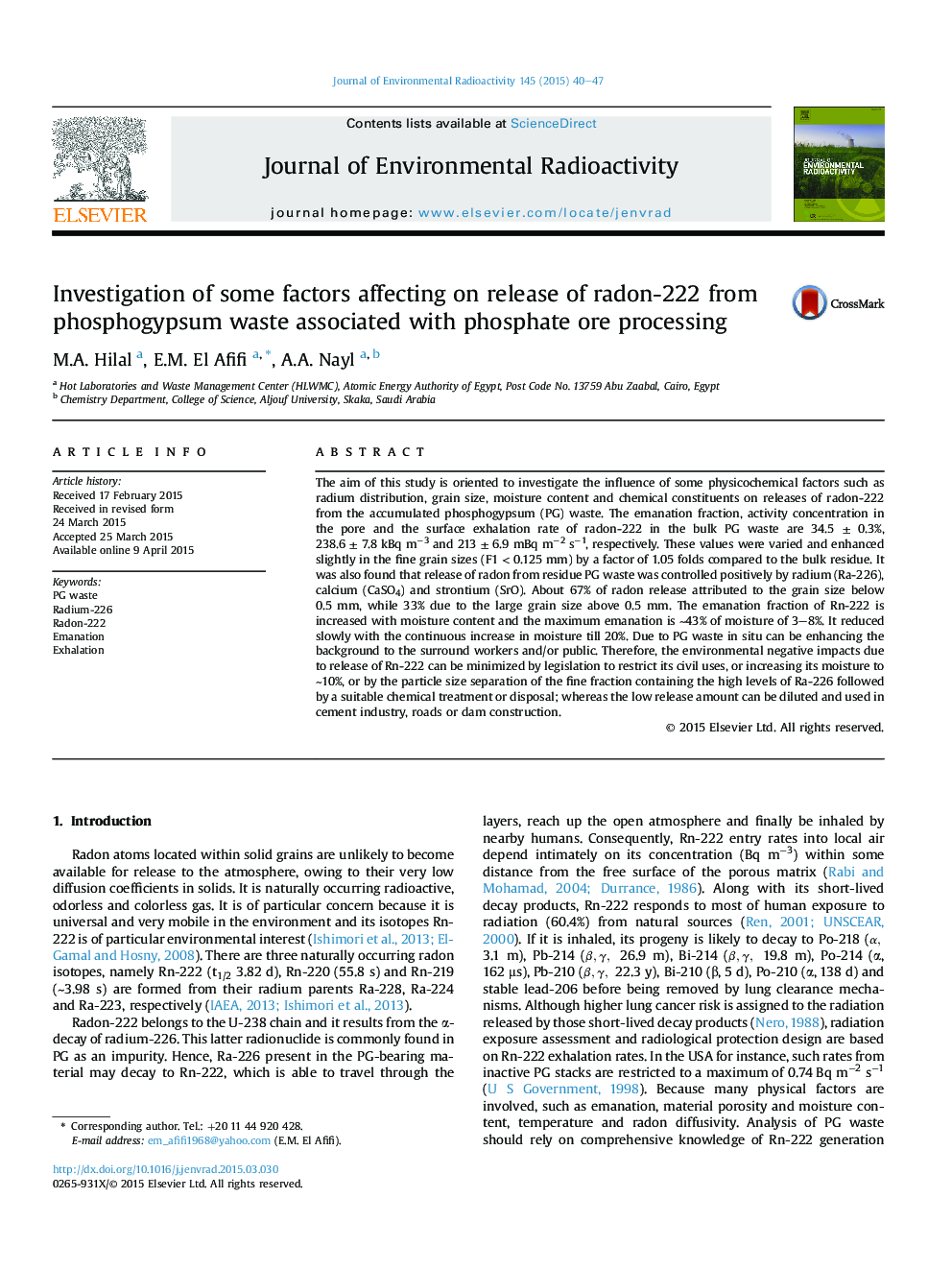| Article ID | Journal | Published Year | Pages | File Type |
|---|---|---|---|---|
| 1737871 | Journal of Environmental Radioactivity | 2015 | 8 Pages |
•35% of emanated radon-222 is released from PG waste.•Emanation fraction is enhanced slightly to 1.05-folds in the fines <0.125 mm.•67% of the mass exhalation rate of Rn attributed to small grain size ≤0.5 mm.•The maximum emanation of Rn was ∼43% at 3–8% moisture.•Ra-226 in PG waste could be treated to reduce hazardous of Rn released to the environment.
The aim of this study is oriented to investigate the influence of some physicochemical factors such as radium distribution, grain size, moisture content and chemical constituents on releases of radon-222 from the accumulated phosphogypsum (PG) waste. The emanation fraction, activity concentration in the pore and the surface exhalation rate of radon-222 in the bulk PG waste are 34.5 ± 0.3%, 238.6 ± 7.8 kBq m−3 and 213 ± 6.9 mBq m−2 s−1, respectively. These values were varied and enhanced slightly in the fine grain sizes (F1 < 0.125 mm) by a factor of 1.05 folds compared to the bulk residue. It was also found that release of radon from residue PG waste was controlled positively by radium (Ra-226), calcium (CaSO4) and strontium (SrO). About 67% of radon release attributed to the grain size below 0.5 mm, while 33% due to the large grain size above 0.5 mm. The emanation fraction of Rn-222 is increased with moisture content and the maximum emanation is ∼43% of moisture of 3–8%. It reduced slowly with the continuous increase in moisture till 20%. Due to PG waste in situ can be enhancing the background to the surround workers and/or public. Therefore, the environmental negative impacts due to release of Rn-222 can be minimized by legislation to restrict its civil uses, or increasing its moisture to ∼10%, or by the particle size separation of the fine fraction containing the high levels of Ra-226 followed by a suitable chemical treatment or disposal; whereas the low release amount can be diluted and used in cement industry, roads or dam construction.
